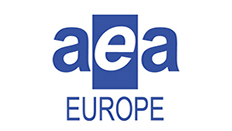EAssessment in the Vocational Context
The Association for Educational Assessment – Europe (AEA-Europe) is a leading association for educational assessment researchers and practitioners. Its principal aim is to foster connections and developments in assessment throughout Europe.
 In 2017, the Association established an eAssessment Special Interest Group (SIG) to provide an effective forum for the exchange of ideas, knowledge and information relating to eAssessment, in order to draw together and develop specialist skills and professional competencies to support best practice.
In 2017, the Association established an eAssessment Special Interest Group (SIG) to provide an effective forum for the exchange of ideas, knowledge and information relating to eAssessment, in order to draw together and develop specialist skills and professional competencies to support best practice.
During the last year, the SIG has run a number of successful webinars for members and is now looking to extend its focus to eAssessment in vocational contexts.
We would be particularly interested to learn of any CIEA colleagues who are involved in this area and we would like to invite you to complete a short survey.
Please follow this link to the survey
We would like to use the information from the survey to plan an appropriate webinar for people involved in vocational assessment, and would welcome proposals from potential CIEA presenters for an appropriate webinar available to members of both organisations.
Interviewed in The Guardian (1) in 2007, Ken Boston, then head of QCA said that ‘real 21st century assessment will be on-line [and] on-demand….’ More than a decade after that interview, very little assessment is either on-line or on-demand.
In England and Wales and in the context of general qualifications, there has been technological innovation: by 2012 66% of (approximately 10 million) GCSE and A level scripts were being marked on-line and all subjects (apart from performing/expressive arts) had some element of on-screen marking. Technology has also brought about significant improvements to the ways in which examination entries are collected and results released.
An ETS report (2) predicted in 1999 that technology would evolve to assess new constructs and skills and in the decade since the report was written a host of more innovative assessment items and approaches have been developed, including simulation-based items, gamification and virtual or augmented reality. Some of these approaches are now being evaluated in work-based settings. (3)
Vocational assessment, though, especially in England and Wales, appears to have remained largely immune to these and similar technological innovations. According to the latest available statistics (4), over 6 million certificates were awarded in England and Wales for vocational and other qualifications in the academic year 2016-2017. Yet eAssessment in the sector is dominated by the automatic marking of straightforward multiple-choice tests and the unambitious use of electronic portfolios. There is seemingly none of the drive to innovate which currently characterises assessment research in other sectors.
The reasons for this relative lack of ambition are not established, but it is likely that the nature of the competition between two (very) large and over a hundred (very) small organisations plays a key part. There is also the issue of high set-up costs for qualifications which attract few learners and perhaps also the feeling that on-screen assessment is somehow not authentic and impacts the validity of the qualification. (5)
The SIG is keen to explore all areas of eAssessment in relation to vocational courses and to identify one or two specific issues to pursue in more depth (6) so please take a few minutes to complete our survey.
Notes
1. The Guardian Tuesday 25 September 2007
2. Bennet, R. (1999) Using new technology to improve assessment, ETS Research report Series 1999:1
3. See, for example, Sebastiaan de Klerk’s analysis of multimedia-based performance assessment, de Klerk, S. (2016). Multimedia-based performance assessment in Dutch vocational education Enschede: Universiteit Twente DOI: 10.3990/1.9789036539975
4. Annual Qualifications Market Report 2016 to 2017 academic year, Ofqual, 2018
5. Consider, for example, the historic resistance to use of the slide rule by high schools students ( Eugene Smith, The High School Journal, 1918) and the on-going ambivalence about the use of calculators in school examinations (Ofqual, consultation outcome, December 2015).
6. We are also looking for themes and presenters for potential webinars. If you are willing to present a webinar, please contact the CIEA

